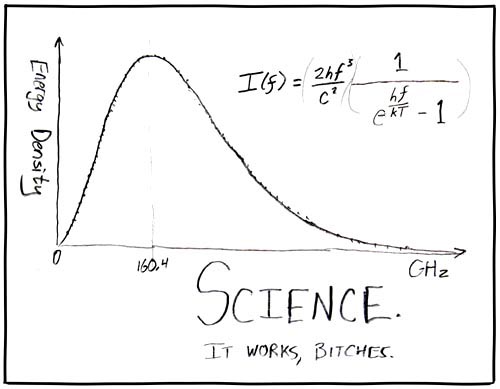Quantum mechanics is famous for saying that a tree falling in a forest when there's no one there doesn't make a sound. Quantum mechanics also says that if anyone is listening, it interferes with and changes the tree. And so the famous paradox: how can we know reality if we cannot measure it without distorting it?
An international team of researchers, led by University of Toronto physicist Aephraim Steinberg of the Centre for Quantum Information and Quantum Control, has found a way to do just that by applying a modern measurement technique to the historic two-slit interferometer experiment in which a beam of light shone through two slits results in an interference pattern on a screen behind.
That famous experiment, and the 1927 Neils Bohr and Albert Einstein debates, seemed to establish that you could not watch a particle go through one of two slits without destroying the interference effect: you had to choose which phenomenon to look for.
"Quantum measurement has been the philosophical elephant in the room of quantum mechanics for the past century," says Steinberg, who is lead author of Observing the Average Trajectories of Single Photons in a Two-Slit Interferometer, to be published in Science on June 2. "However, in the past 10 to 15 years, technology has reached the point where detailed experiments on individual quantum systems really can be done, with potential applications such as quantum cryptography and computation."
With this new experiment, the researchers have succeeded for the first time in experimentally reconstructing full trajectories which provide a description of how light particles move through the two slits and form an interference pattern. Their technique builds on a new theory of weak measurement that was developed by Yakir Aharonov's group at Tel Aviv University. Howard Wiseman of Griffith University proposed that it might be possible to measure the direction a photon (particle of light) was moving, conditioned upon where the photon is found. By combining information about the photon's direction at many different points, one could construct its entire flow pattern ie. the trajectories it takes to a screen.
"In our experiment, a new single-photon source developed at the National Institute for Standards and Technology in Colorado was used to send photons one by one into an interferometer constructed at Toronto. We then used a quartz calcite, which has an effect on light that depends on the direction the light is propagating, to measure the direction as a function of position. Our measured trajectories are consistent, as Wiseman had predicted, with the realistic but unconventional interpretation of quantum mechanics of such influential thinkers as David Bohm and Louis de Broglie," said Steinberg.
The original double-slit experiment played a central role in the early development of quantum mechanics, leading directly to Bohr's formulation of the principle of complementarity. Complementarity states that observing particle-like or wave-like behaviour in the double-slit experiment depends on the type of measurement made: the system cannot behave as both a particle and wave simultaneously. Steinberg's recent experiment suggests this doesn't have to be the case: the system can behave as both.
"By applying a modern measurement technique to the historic double-slit experiment, we were able to observe the average particle trajectories undergoing wave-like interference, which is the first observation of its kind. This result should contribute to the ongoing debate over the various interpretations of quantum theory," said Steinberg. "It shows that long-neglected questions about the different types of measurement possible in quantum mechanics can finally be addressed in the lab, and weak measurements such as the sort we use in this work may prove crucial in studying all sorts of new phenomena.
"But mostly, we are all just thrilled to be able to see, in some sense, what a photon does as it goes through an interferometer, something all of our textbooks and professors had always told us was impossible."
Research partners include the University of Toronto's Centre for Quantum Information and Quantum Control, Department of Physics and Institute for Optical Sciences, the National Institute of Standards and Technology in Boulder, Colorado, the Institute for Quantum Computing at the University of Waterloo, Griffith University, Australia, and the Laboratoire Charles Fabry in Orsay, France. Research was funded by the Natural Sciences and Engineering Research Council of Canada, the Canadian Institute for Advanced Research, and Quantum Works.


.jpg)